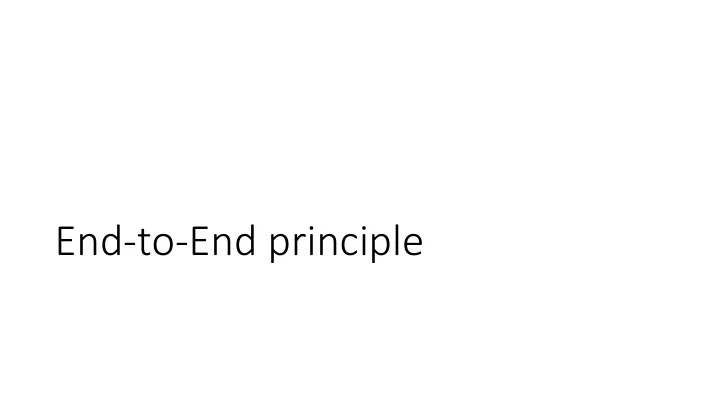

End-to-End principle
End-to-end Principle • Broad networking principle • First implementation in French CYCLADES network (after ARPA) (1970) • Articulated in its most recognizable form by Saltzer, Reed, Clark (1981) [paper] • Guidance on placing functionality such as reliability, security, etc.—in network or at endpoints (hosts)? • Argues for endpoint placement
Multiple interpretations of the principle • The network cannot be trusted. Do it yourself. • The network can suffer heavy damage • Nuclear attacks (but not DDoS attacks!) • Need end-to-end correctness anyway • Diminishing returns from in-network functionality • Not everyone needs it • Place functionality in the network only when necessary (e.g., for performance)
E2E Example: Error-correcting codes IP: 802.11: Host detects Link detects errors errors
E2E Example: ARQ TCP: 802.11: Host retransmits Link detects drops on failure and retransmits
E2E Example: In-order delivery TCP: SS5: Host enforces in- Network enforces order delivery in-order delivery
E2E Example: Security SSL: GSM: Host encrypts Network encrypts content content
End-to-End limitations • Some functionality cannot be implemented at endpoints • NATs, DoS protection, … the principle is silent on these • Assumes a clear dividing line between network and endpoints • Reality of distributed applications (e.g., CDNs) is more complex • No guidance on how much functionality can go in the network for performance
Recommend
More recommend